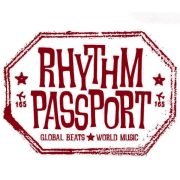Boogaloo (or, more aptly bugalú) is the sound of Puerto Rican and Cuban migration in the U.S. It characterised and described the impact and feelings of Caribbean migrants in New York from the late 1950s till early ‘70s. For this reason, more than a musical mix between the traditional caribeño sound and up-and-coming North American one, it embodies the synthesis between Afro-American and Afro-Caribbean culture. It indeed decisively helped the integration of the latter in their new city but also boosted the first to understand and interact with their new neighbours.
In fact, everything arguably happened in the most Hispanic boroughs of New York: North Manhattan and Harlem since the second half of the 1950s. There, the Nuyorican community was growing listening to the local R&B, soul and doo wop but also having clear in mind its music roots represented by son, mambo and chachachà. In that way, they started to “Latinize R&B”, adding energetic rhythms to the soulful melodies. Boogaloo was an imaginary meeting place between the Latin and Black American communities creating a social bond between the two musical audience and gathering them on the dance floor together.
Until the 1970s and the arrival and triumph of salsa in the States, bugalú was the most significant Latin music style. It ruled the charts for almost two decades and represented a crucial spur to the social integration of two ethnic minorities in the country.


